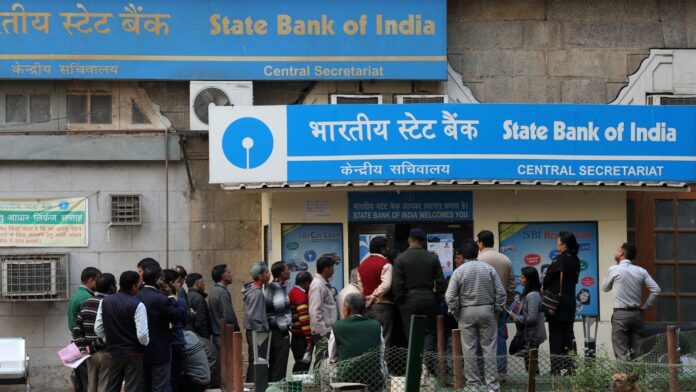The country’s largest lender State Bank of India (SBI) is preparing to raise up to Rs 25,000 crore through qualified institutional placement (QIP) route. If subscribed fully, the issue will be the biggest share sale to institutional investors in the country. Experts believe that the QIP will help the lender improve its common equity tier 1 (CET1) ratio, an indication of a bank’s financial strength.
How much is SBI looking to raise through the QIP route?
In May 2025, the bank said it received its board approval to raise equity capital aggregating up to Rs 25,000 crore in one or more tranches during FY2026 through QIP/ follow-on public offer (FPO) or any other permitted mode. As per a Bloomberg report, SBI’s QIP may be launched this week.
It is likely to be the biggest QIP in the domestic capital markets, surpassing Coal India’s Rs 22,560 crore QIP launched in 2015. This is also for the first time since 2017 that SBI is raising money through equity sale. The bank had raised Rs 15,000 crore in June 2017.
The Rs 25,000 crore QIP of SBI will result in a reduction in the government’s ownership in the lender. As of March 31, 2025, the government’s holding in SBI stood at 57.43 per cent.
QIP is one of the capital raising instruments used by listed companies to raise funds by issuing equity shares to qualified institutional buyers (QIBs), including venture capital funds, pension funds and mutual funds. It is one of the important sources for fund raising for the listed players.

SBI has shortlisted six investment banks – ICICI Securities Ltd, Kotak
Investment Banking, Morgan Stanley, SBI Capital Markets Ltd, Citigroup and HSBC Holdings Plc – to manage the QIP.
How will the fund raise benefit SBI?
Analysts believe that the capital raised through the QIP will result in an improvement in SBI’s core equity capital – common equity tier 1 (CET1) capital ratio. As of March 31, 2025, the bank’s CET 1 ratio stood at 10.81. The 25,000-crore QIP will help in increasing SBI’s CET1 ratio by nearly 60 basis points (bps). One basis point is one-hundredth of a per cent.
Story continues below this ad
“When you see SBI’s financials, they have been making strong profits. Despite higher profits, the bank’s CET1 ratio has not improved. This may be one of the reasons for SBI to launch this QIP,” said a banking analyst.
Capital equity tier 1 is defined as a bank’s core equity capital as a percentage of risk-weighted assets. It shows a bank’s solvency or its ability to absorb losses immediately. It is an indicator of a bank’s financial strength. Improvement in CET 1 ratio shows accretion of high-quality capital by banks.
The Reserve Bank of India (RBI) has mandated banks to maintain a minimum CET1 ratio of 8 per cent, which includes a capital conservation buffer of 2.5 per cent. However, SBI, being a domestically systemically important bank (D-SIB), is required to keep an additional common equity tier 1 requirement as a percentage of risk weighted assets (RWAs) of 0.8 per cent.
Market experts also said that through the QIP, SBI is building capital buffers to meet credit demand in the near future.
Story continues below this ad
What is the likely price at which SBI will raise funds?
While the exact price at which SBI will raise funds through the QIP is not known, analysts believe that the floor price will be closer to the bank’s current share price. The floor price is calculated as the average of the closing prices of a company’s shares over the preceding two weeks from a relevant date.
“It will be closer to the fair market price. The current share price of the bank is close to the fair market price,” said a banking analyst. The bank’s shares closed at Rs 809.3 apiece on Monday.



